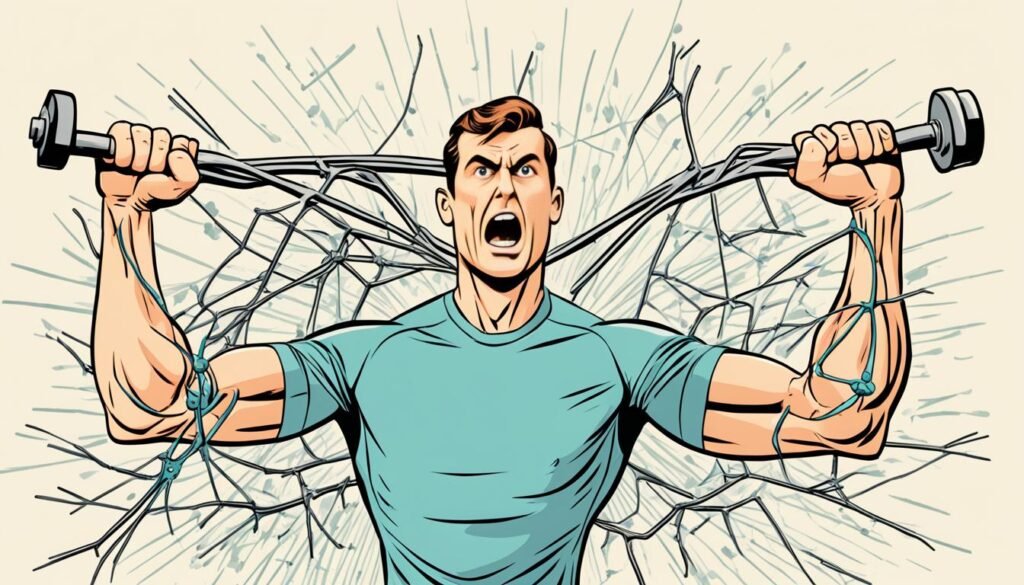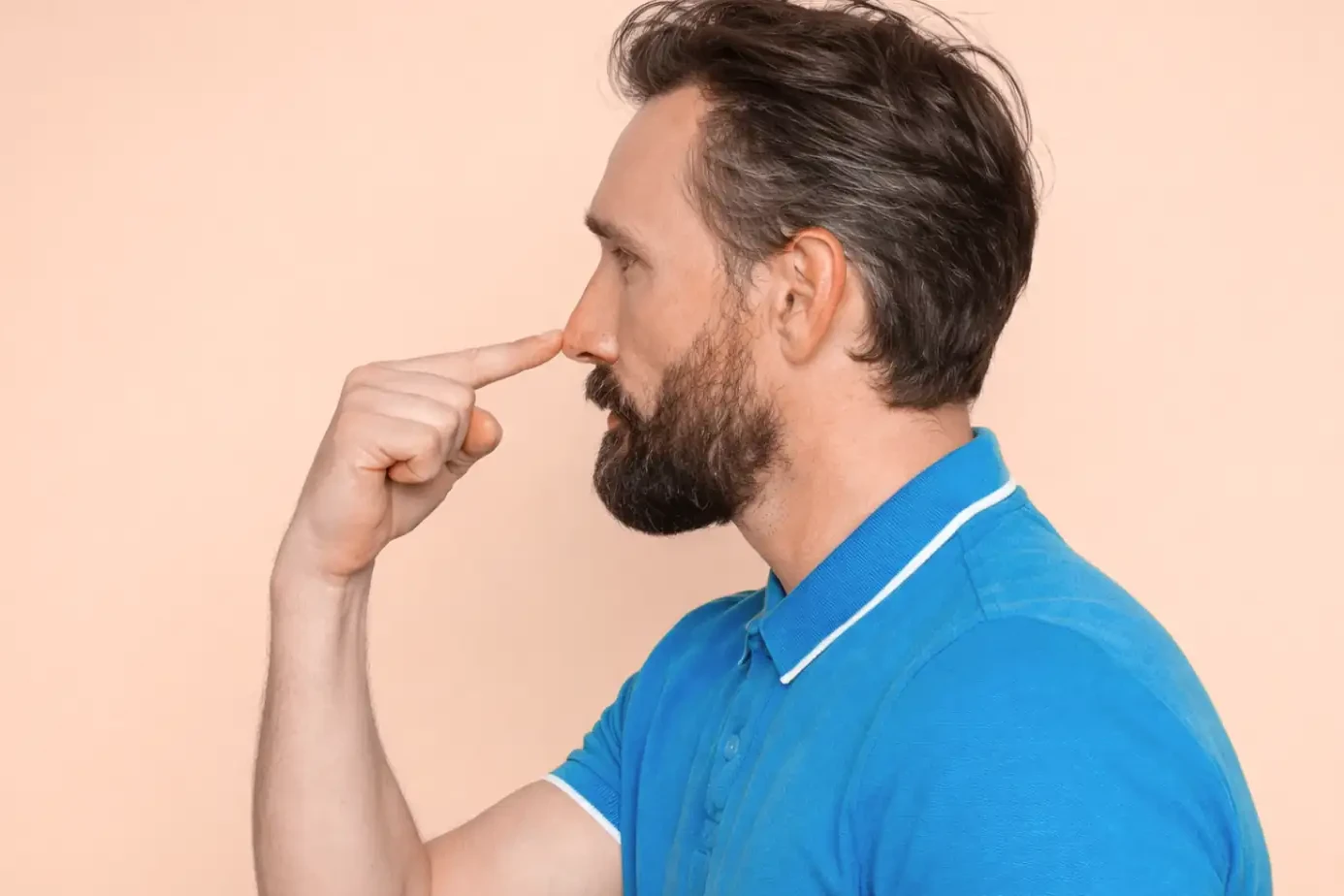Feeling numb, weak, or uncoordinated in your arm, wrist, and hand? It might be radial nerve palsy. This condition affects the radial nerve, running from your armpit to your hand. It controls moving your elbow, wrist, and fingers.
Many things can cause radial nerve palsy, such as trauma, nerve pressure, and certain health issues. Signs can include strange feelings in your hand, trouble moving your arm, and a dropping wrist.
To diagnose radial nerve palsy, doctors do exams and tests. They might use imaging scans or nerve tests. Treating it can involve physical therapy, drugs, or wearing a splint. Sometimes, surgery might be needed.
Getting better and avoiding problems is the goal. Without proper care, you might face hand issues or moving problems later on. Thankfully, good treatment and rehab can help most people improve a lot.
Table of Contents
ToggleWhat is Radial Nerve Palsy?
Definition and Overview
Radial nerve palsy is a unique condition affecting the biggest nerve in your upper limb. It starts from the shoulder, goes through the arm to the wrist’s back. If this nerve is hurt, daily tasks can get much harder.
Role of the Radial Nerve
The radial nerve is key for moving and feeling in your arm and hand. Injuries can lead to weakness and numbness. This makes it hard to move your elbow, wrist, and fingers.
The radial nerve is vital for arm muscles. It can be hurt by accidents, doing the same motions over and over, or health issues. Knowing about radial nerve palsy helps in how to treat and cope with this problem.
Symptoms of Radial Nerve Palsy
When the radial nerve is hurt or not working well, it causes several symptoms. These can make it hard to do your daily tasks. It’s important to know these signs to deal with radial nerve palsy properly.
Numbness and Tingling
You might feel numbness and tingling if you have radial nerve palsy. This happens in the back of your hand and your thumb, index, and middle fingers. The radial nerve helps these areas feel things.
Weakness and Loss of Movement
With this condition, your fingers may get weak and lack coordination. This makes it hard to do things that need careful hand movements. Also, straightening your arm at the elbow can be tough, which is because of the radial nerve.
Wrist Drop
“Wrist drop” is a key sign of radial nerve palsy. Your wrist hangs loose and you can’t lift it. The nerve controls the muscle that extends the wrist and fingers, causing this function to be lost.

The exact symptoms you have can change based on where and how badly the nerve is injured. If you think you might have radial nerve palsy, see a doctor. Early treatment and care can make a big difference in how well you recover.
Causes of Radial Nerve Palsy
The reasons for radial nerve palsy vary from person to person. They all have different effects and ways they happen. Knowing these causes is key to how we deal with, treat, and stop this issue.
Traumatic Injuries
Breaking or dislocating bones can often cause radial nerve palsy. A break in the humerus bone, especially near the elbow’s end in a spiral shape, is a big risk. It can lead to palsy in about 15% to 25% of cases. This happens because strong impacts can hurt or press against the nerve, causing the usual symptoms.
Compression or Entrapment
If the radial nerve is pressed or trapped, it can also cause issues. Using crutches not the right way, wearing tight casts, or having certain health problems can press on the nerve. This stops the nerve from working right, causing numbness, trouble moving, and coordination issues in parts of the body.
Underlying Medical Conditions
Health conditions like diabetes, alcohol misuse, and other nerve issues can also be a factor in radial nerve palsy. These issues can hurt the nerves, increasing the risk of palsy. This is especially true for people already dealing with nerve problems or other nervous system conditions.

Diagnosing Radial Nerve Palsy
Getting a right diagnosis is key in treating radial nerve palsy and boosting your recovery. Your doctor will use a mix of exams, tests, and studies to check how bad your nerve issue is.
Physical Examination
To start, your doctor will give you a careful physical exam. They’ll look at symptoms like lack of strength, feeling less, and trouble moving your arm, wrist, or hand. This helps find exactly where the nerve is damaged, and rules out other possible reasons for your issues.
Imaging Tests
Your doctor might also order some tests like X-rays, ultrasound, or MRI scans. These can show if there are any issues like broken bones, tumors, or other things pressing on your nerve. Finding these problems is an important step in diagnosing your condition.
Nerve Conduction Studies
Tests like EMG and NCS play a big role in confirming and gauging how bad the radial nerve palsy is. They check the flow of electricity in the nerve, helping to see if the issue is in the nerve itself or in the nearby muscles. This test is also useful in watching how well your nerve is healing.
With careful exams and high-tech tests, your healthcare team can spot radial nerve palsy and set up a plan that fits you. This detailed approach is needed to treat the issue well and raise your chances of getting better.
Radial nerve palsy
Radial nerve palsy is a serious issue that affects the arm, wrist, and hand. It’s a placeholder for more content on this topic. The info we’ve gathered helps understand what radial nerve palsy is, its symptoms, causes, diagnosis, and treatment.
Dealing with radial nerve palsy? You need a team of experts to help. That means working with doctors, therapists, and doing your part for recovery. This teamwork boosts your chances of getting better without long-term problems.
There’s always new info and treatments coming out. This could mean better results for people with radial nerve palsy. Stay informed, look after your health, and always seek help when you need it.
Radial Nerve Palsy Treatment Options
The main goal in Radial Nerve Palsy Treatment is to restore arm, wrist, and hand function and mobility. Your medical team will create a plan for you. This plan might include many things, like conservative treatments, medicine, physical therapy, and sometimes surgery.
Conservative Treatments
Conservative treatments are often the first steps. They aim to help without surgery. Options could be pain medicine, corticosteroid shots, and exercises. Wearing a splint or cast might also help the wrist and hand heal.
Medication and Injections
Doctors might give you pain pills or corticosteroid shots. These can ease swelling and pain. This allows you to do more in your rehab program.
Physical Therapy and Exercises
Physical therapy is very important for radial nerve palsy. A therapist will help you do exercises. This will keep muscles strong, make your movement better, and help the nerve heal. You might do things like stretching, strengthening, and activities to use your arm and hand better.
Surgical Intervention
If the issue is very bad or goes on for a long time, you might need surgery. This could mean fixing issues on the nerve or in the structures around it. But, most of the time, doctors try other treatments first. Surgery is only done if no other way is working. Still, a detailed plan that involves many experts is key to getting better.
Recovery and Rehabilitation
The good news is that most people recover from radial nerve palsy. One source says up to 92% heal in 3 to 4 months using just basic treatment. This progress follows a known path, with certain muscles getting stronger first.
Timeline for Recovery
Recovery times vary, from weeks to years. But, for most, things get better within 4 months of treatment start. This is more likely if the nerve is not completely cut or torn, as a source notes.
Occupational Therapy
Occupational therapy is very important for recovery. Another source says these therapists help people deal with lasting issues and avoid getting hurt again. They focus on fixing how people work or use tools, making recovery smoother.
Preventing Recurrence
Stopping radial nerve palsy from coming back is key. To do this, always use things like tools or crutches the right way. Keep an eye on how you move and work, and see your doctor as needed. This all helps in staying better after you’ve healed.
Complications of Radial Nerve Palsy
Most people with radial nerve palsy will recover well. But, not all cases are the same. There are risks you should know about. These include losing feeling or the ability to move your hand. Also, your hand might look different or you could get hurt without noticing.
If your radial nerve doesn’t heal fully, you might face these issues. The second source says severe initial injury or incomplete healing can cause problems. Yet, early treatment can help avoid or lessen these risks, improving your chances for a full recovery.
Staying in touch with your healthcare team is crucial. They may include orthopedic and hand surgeons, and neurologists. They will watch your progress and step in if any problems show up. Working together, most patients overcome radial nerve palsy.
Radial Nerve Palsy in Specific Populations
Radial nerve palsy can impact people from all backgrounds. Yet, some groups may face more challenges or are more likely to get this condition. It’s key to know about these specific risks to offer the right treatments and prevention tips.
Radial Nerve Palsy in Athletes
People who play sports that use their arms a lot or are risky like tennis, football, or hockey might get radial nerve palsy more often. Things like using the wrong equipment or not warming up right could be reasons. For athletes, wearing the right gear, doing special exercises, and getting quick help for any injuries is crucial. This can lower the chances of getting radial nerve palsy and help them heal faster if it happens.
Radial Nerve Palsy in Occupational Settings
Some jobs also raise the chance of getting radial nerve palsy. For example, doing the same moves over and over, standing or sitting in weird ways, or using crutches a lot might cause issues. People who do manual work, build things, or heavily use crutches could suffer more from this condition. It’s important for bosses and health experts at work to teach the right ways to work, use tools, and move. These efforts can help prevent radial nerve palsy in such jobs.
Prevention Strategies for Radial Nerve Palsy
Radial nerve palsy may not always be preventable, but there are steps to lower the risks. This includes paying attention to how you sit and sleep. It’s also important to keep your body in comfortable positions.
Ergonomic Considerations
Your daily activities matter when trying to avoid radial nerve palsy. Make sure your workspace is set up well. Have your computer screen at eye level. Also, keep your keyboard and mouse close by. This reduces the chance of nerve strain. When you sleep, use pillows to keep your arm and hand in a good position.
Proper Use of Crutches and Assistive Devices
If using crutches or aids, proper handling is vital. Incorrect usage can cause radial nerve palsy. Ask your doctor or a therapist for guidance. They can show you the right way to use these devices. This knowledge helps prevent nerve issues.
Living with Radial Nerve Palsy
Dealing with the challenges of radial nerve palsy every day can be tough. But, there are ways to keep your independence and life quality high. You can use special equipment and join groups that understand to adapt well.
Adaptive Equipment and Assistive Devices
Using the right equipment is key for those with radial nerve palsy. It helps manage the condition and lets you do daily tasks. Things like splints, braces, or special devices can support your wrist and hand. This way, you can do more and live a full life. Working with therapists helps find the best tools for you.
Support Groups and Resources
Connecting with people facing the same challenges can make a big difference. Support groups and online communities are great for this. They offer a space to share, learn, and pick up helpful tips for dealing with the condition.
Healthcare professionals and therapists are also there to support you. They can give advice and help with managing the condition better. This includes tips for daily life with radial nerve palsy.
Recent Advancements and Research
Our knowledge about radial nerve palsy is growing every day. Researchers and doctors are looking into new treatments. They aim to help people with this issue better. They are studying advanced surgical techniques and new therapies. These include nerve transfers and regenerative methods.
Emerging Treatment Options
It’s crucial to keep researching radial nerve palsy. This ensures we know about and can use the latest treatments. Although some sources don’t talk about new treatments, they stress the importance of finding better ways to care for patients.
Ongoing Clinical Trials
The third source talks about research studies now happening. These radial nerve palsy clinical trials are working to improve patient care. These trials look to find the best ways to treat people with radial nerve injuries.
In addition to new treatments, these trials aim to set a better care standard. They want to make the lives of those with radial nerve palsy better.
By keeping up with the latest research, doctors can create better plans for their patients. This teamwork aims to provide the best care. It helps improve the lives of those affected by radial nerve palsy.
Conclusion
Radial nerve palsy is a complex issue that greatly affects your arm, wrist, and hand. Knowing about its signs, causes, how it’s diagnosed, and treatment options is key. It’s important to work with a team of professionals, including therapists, and be proactive in your care.
Getting diagnosed early, receiving the right treatments, and focusing on getting better can help a lot. With these, people with radial nerve palsy often get back their function and movement. And, as science progresses, there’s hope for even better ways to treat and live with this condition.
In summary, dealing with radial nerve palsy is tough, but not impossible. By teaming up with your doctors and taking on available treatments, you can start your path to recovery. Always remember, there are ways to improve and enjoy your life more, despite this challenge.
FAQ
What is radial nerve palsy?
Radial nerve palsy affects the nerve controlling arm and hand movement. Symptoms include numbness, weakness, and a wrist drop.
What are the common symptoms of radial nerve palsy?
Main symptoms are numbness, weakness, and difficulty moving fingers and arm freely. A “wrist drop” pattern is often seen.
What are the typical causes of radial nerve palsy?
Causes include injuries, nerve compression, and medical conditions like diabetes or heavy drinking.
How is radial nerve palsy diagnosed?
Diagnosis involves a physical exam, imaging tests, and electrodiagnostic studies. These help confirm the condition and determine its extent.
What are the treatment options for radial nerve palsy?
Treatments can range from conservative to surgical. This may include pain management, physical therapy, and, in severe cases, surgery.
What is the recovery and rehabilitation process for radial nerve palsy?
With proper treatment, most people improve in 3 to 4 months. Occupational therapy helps them adjust and prevents future problems.
What are the potential complications of radial nerve palsy?
Complications may lead to loss of feeling or hand movement, hand deformities, and injuries without noticing.
Are there any specific populations at higher risk for radial nerve palsy?
Athletes and workers doing repeated arm tasks are more likely to get radial nerve palsy.
Can radial nerve palsy be prevented?
While it’s hard to prevent, using the right tools, correcting risk factors, and good ergonomics can lower the risk.
What are some ways to manage daily life with radial nerve palsy?
Using special equipment and joining support groups can make living with radial nerve palsy easier and more independent.
What are the latest advancements in the treatment of radial nerve palsy?
New treatments are under study, from advanced surgeries to therapies like nerve transfers. These aim to better help those with radial nerve injuries.
Source Links
- https://www.mountsinai.org/health-library/diseases-conditions/radial-nerve-dysfunction
- https://www.ncbi.nlm.nih.gov/pmc/articles/PMC5367587/
- https://emedicine.medscape.com/article/1141674-overview
- https://centenoschultz.com/condition/radial-nerve-palsy/
- https://www.assh.org/handcare/blog/advice-from-a-hand-therapist-what-is-radial-nerve-palsy
- https://www.nicklauschildrens.org/conditions/radial-nerve-palsy
- https://www.healthline.com/health/radial-nerve-dysfunction
- https://www.ncbi.nlm.nih.gov/books/NBK537304/
- https://www.baptisthealth.com/care-services/conditions-treatments/radial-nerve-palsy
- https://www.neurosurgery.columbia.edu/patient-care/conditions/radial-nerve-injury
- https://www.ncbi.nlm.nih.gov/pmc/articles/PMC10229417/
- https://www.ncbi.nlm.nih.gov/pmc/articles/PMC6439110/
About The Author

This article is medically reviewed by Dr. Chandril Chugh, Board-Certified Neurologist, providing expert insights and reliable health information.
Dr. Chandril Chugh is a U.S.-trained neurologist with over a decade of experience. Known for his compassionate care, he specializes in treating neurological conditions such as migraines, epilepsy, and Parkinson’s disease. Dr. Chugh is highly regarded for his patient-centered approach and dedication to providing personalized care.
→ Book a consultation to discover which remedies suit your needs best.




